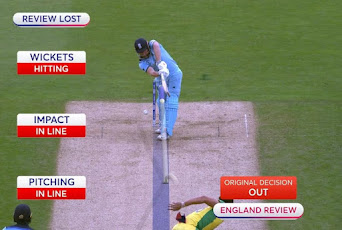Forms of Batsman Dismissal in Cricket
1. Caught in the field
2. Caught and bowled
3. Bowled
This is when a ball beats a batsman's guard and hits the wickets (stumps).
The batsman could have completely missed the ball (clean bowled) or he could have edged the ball into his stumps (played on), in both instances the dismissal will be indicated as "bowled."
4. Leg Before Wicket (LBW)
5. Stumped
This is when a fielder (usually wicket keeper) dismisses a batsman by dislodging stump bails when the batsman is playing at a delivery while standing out of his return crease.NB. The ball has to be in the hand that dislodges the bails.
6. Run out
This is when a fielder dislodges a batsman's stumps when the batsman is short of his return crease while trying to complete a run.
A run out can be executed by throwing the ball at the stumps while a batsman is out of his crease or dislodging the bails with ball in hand.
7. Obstruction
This is when an umpire dismisses a batsman because the umpire believes the batsman denied the fielding team a clear run out opportunity by intentionally blocking a ball thrown at the stumps.
8. Hit wicket
This is when a batsman makes contact with his stumps while playing a stroke and dislodges his own bails in the process.






Comments
Post a Comment
Comments